Key takeaways
- Mindfulness in coaching fosters genuine connection and understanding, enabling deeper reflection and growth for both coach and client.
- Integrating tools like the Headspace app can enhance mindfulness practices by providing accessible resources and structured content that support coaching goals.
- Short, consistent mindfulness exercises can create significant shifts in coaching sessions, promoting a relaxed environment conducive to profound conversations.
- Modeling vulnerability and authenticity in mindfulness practice builds trust and enriches the coaching relationship, acknowledging that mindfulness is a continuous journey.

Understanding mindfulness in coaching
Mindfulness in coaching, to me, is more than just a buzzword; it’s about being fully present with the person in front of you. Have you ever noticed how easy it is to get distracted during a conversation? I’ve found that practicing mindfulness helps me truly listen, catching nuances I might otherwise miss.
When I first integrated mindfulness into my coaching sessions, I was surprised by how it shifted the energy in the room. It created a space where emotions could be acknowledged without judgment, opening the door for deeper reflection and growth. Isn’t that what we all want from coaching—genuine connection and understanding?
Mindfulness also invites both coach and client to slow down, which can be uncomfortable but necessary. It challenges us to sit with uncertainty or discomfort rather than rushing to fix it. From my experience, this patience often leads to the most meaningful breakthroughs, showing the power mindfulness holds within coaching relationships.
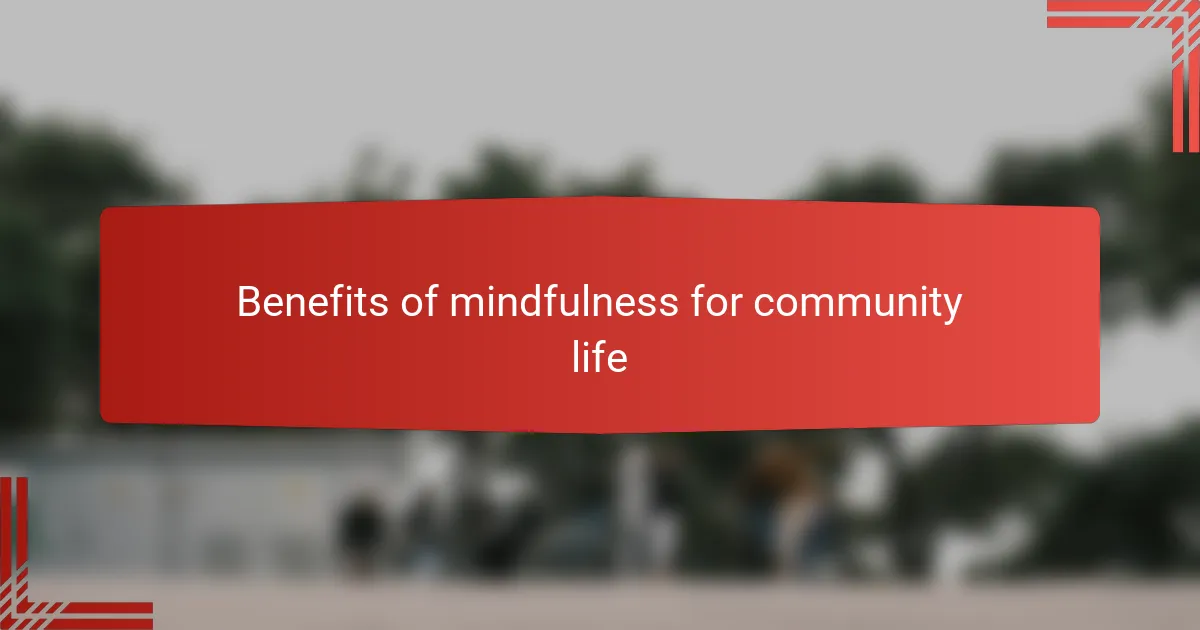
Benefits of mindfulness for community life
When I think about community life, mindfulness seems like a secret ingredient that helps bring people closer together. Have you ever noticed how being fully present with others can soften tensions and build real trust? In my experience, mindfulness encourages us to listen not just with our ears but with our hearts, making our shared spaces more empathetic and supportive.
One moment that sticks with me is when a neighborhood meeting I was part of shifted completely after someone paused to breathe and reflect mindfully. Suddenly, conversations became less about defending positions and more about understanding different perspectives. That shift in energy felt like the community was moving from noise to harmony, and that’s the kind of environment mindfulness can cultivate.
Isn’t life in a community all about connection and support? Mindfulness nurtures those bonds by helping us manage stress, reduce misunderstandings, and approach conflicts with calmness. From what I’ve seen, this not only strengthens relationships but also fosters a culture of patience and compassion that benefits everyone involved.

Introduction to Headspace app features
When I first opened the Headspace app, I was immediately drawn to its clean design and simple navigation. Have you ever used an app that felt overwhelming from the start? Headspace avoids that by offering guided meditations, sleep sounds, and mindfulness exercises that fit easily into daily life.
One feature that really stood out to me was the variety of meditation packs categorized by themes like stress, focus, and even physical health. This felt personal, like the app was designed to meet me exactly where I was, no matter the challenge. It’s reassuring to have a tool that adapts to your needs rather than a one-size-fits-all approach.
What I find really helpful is the daily reminder and progress tracker. It gently encourages consistency without feeling pushy, which makes sticking to a mindfulness routine feel achievable instead of daunting. From my experience, these little nudges can make all the difference in building lasting mindfulness habits.
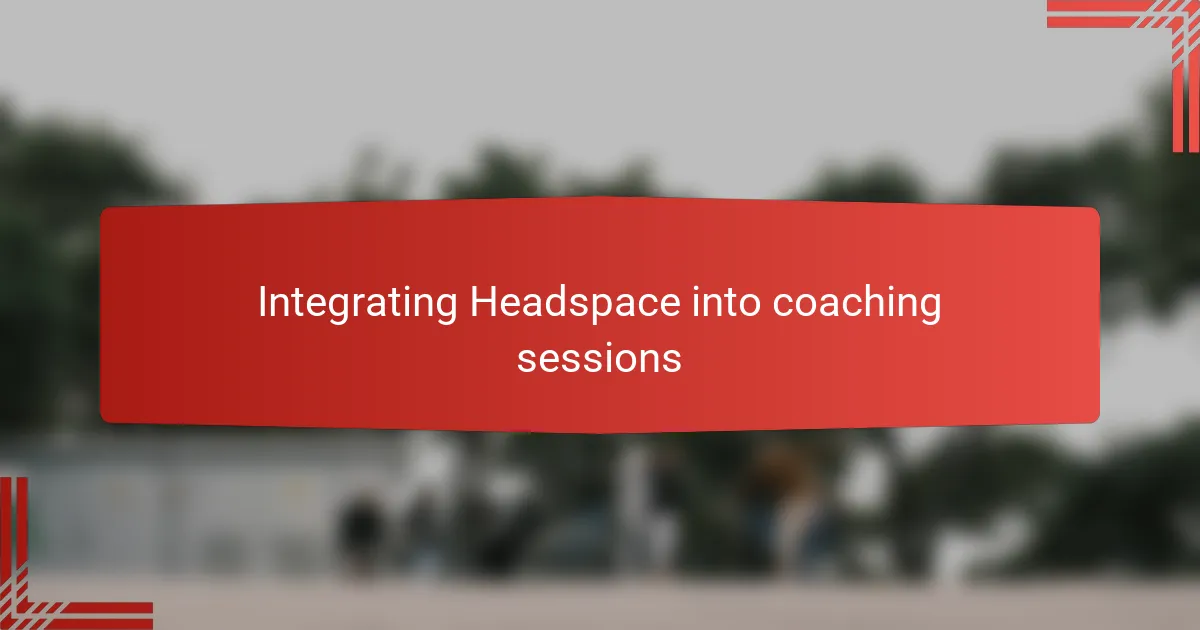
Integrating Headspace into coaching sessions
Integrating Headspace into coaching sessions has been a surprisingly smooth process for me. Have you ever struggled to find a practical tool that complements your coaching style? Headspace’s guided meditations provide a shared language for mindfulness, making it easier to invite clients into presence without overwhelming them.
I once noticed a shift in a client’s openness after introducing a short Headspace breathing exercise at the start of our session. That simple pause brought an unexpected calm, allowing deeper issues to surface naturally. Isn’t that what we want—to create space where our clients feel safe enough to explore themselves more fully?
Another aspect I appreciate is how Headspace’s structured content fits uniquely into different coaching goals. Whether we focus on stress management or building focus, the app’s targeted themes become a supportive companion between sessions. From my perspective, this integration not only enhances the coaching experience but also empowers clients to take ownership of their mindfulness journey.
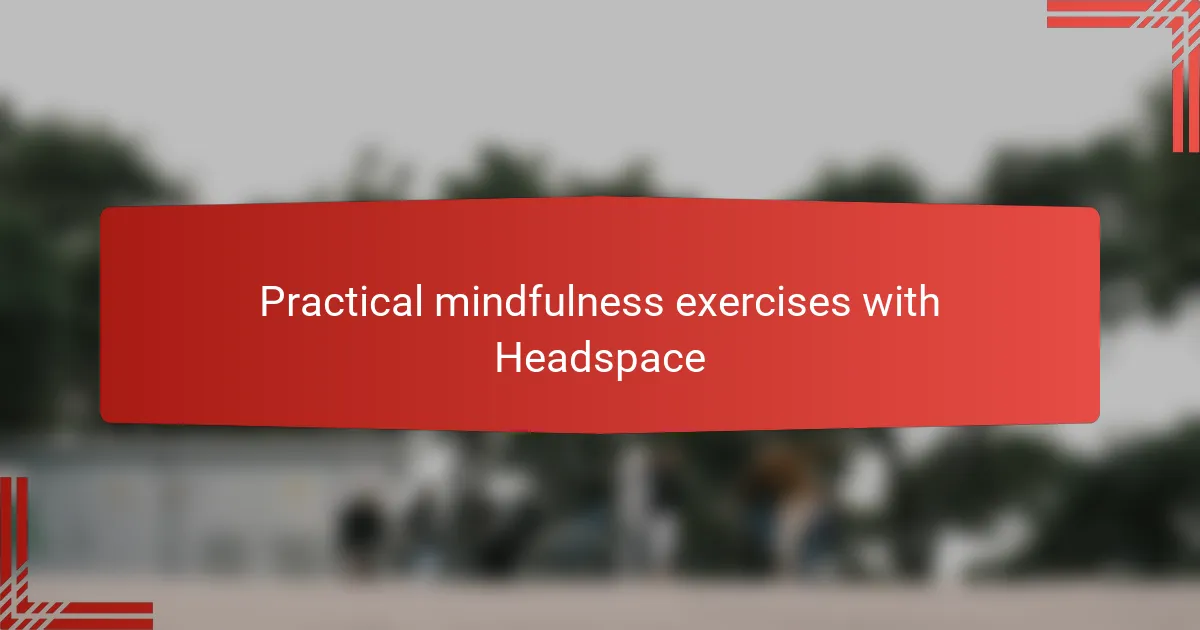
Practical mindfulness exercises with Headspace
What I really appreciate about Headspace’s practical exercises is how accessible they are. Even when my day feels hectic, a quick three-minute guided breathing session helps me reset instantly. Have you ever tried pausing like that mid-chaos? It’s surprising how much calmer you feel afterward.
Another exercise that stuck with me is the body scan meditation. At first, I was skeptical—how could simply noticing sensations make a difference? But as I practiced, I realized it uncovers tension I didn’t even know I was holding, which then softens as I breathe into those areas. That awareness has truly deepened my sense of presence during coaching sessions.
What’s more, Headspace’s mindfulness exercises come with clear instructions and soothing voices, which made it easier for me to guide clients through them without hesitation. I’ve noticed that this practical approach helps clients feel grounded faster, creating a natural segue into deeper conversation. Have you experienced that kind of gentle transition? It’s a powerful moment where mindfulness and coaching blend seamlessly.
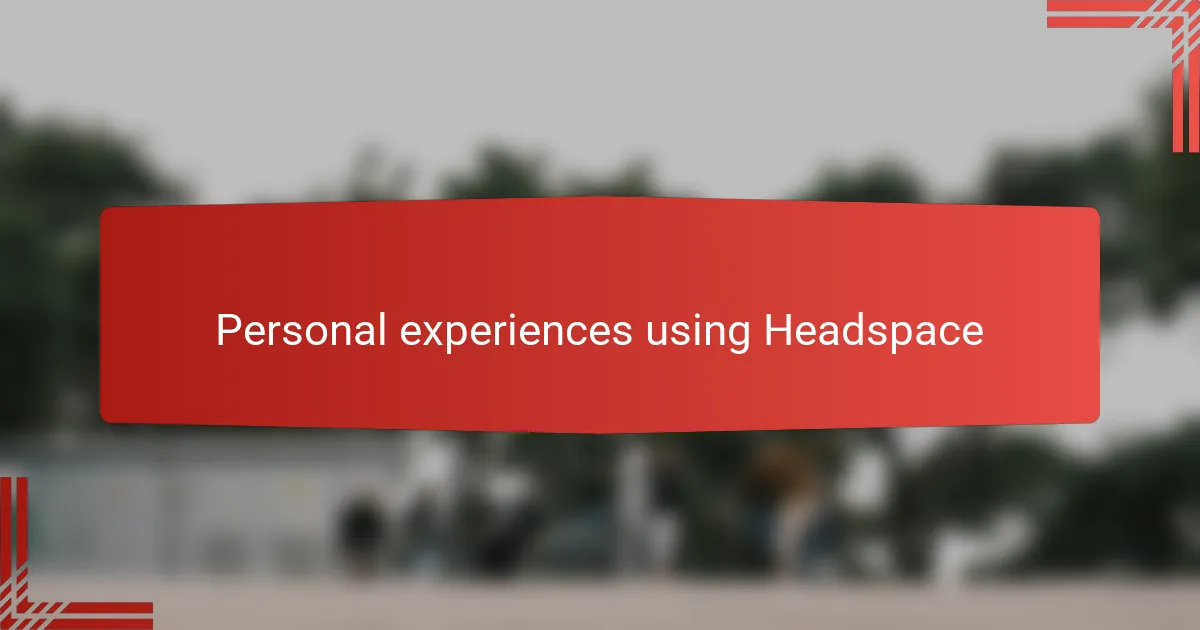
Personal experiences using Headspace
Using Headspace has been a surprisingly comforting part of my daily routine. I remember the first time I tried a guided meditation there—I was skeptical about sitting still for even five minutes, but the app’s gentle voice made it feel like a friendly conversation rather than a chore. Have you ever experienced how something as simple as slowing down can unexpectedly lighten your mood? That moment stuck with me.
One particular session on managing anxiety really resonated. As I followed the steps, I noticed my racing thoughts gradually settle, creating a mental space I hadn’t accessed in a while. It taught me that mindfulness, with the right guidance, isn’t about emptying the mind but about noticing without judgment. That insight has shaped how I approach stress, both personally and professionally.
What I find most valuable about Headspace is its flexibility. Whether I have a full hour or just a brief moment between tasks, there’s a meditation that fits. This adaptability has made mindfulness a consistent companion rather than an occasional experiment—something I believe is key for anyone looking to embed mindfulness into their life or coaching practice.
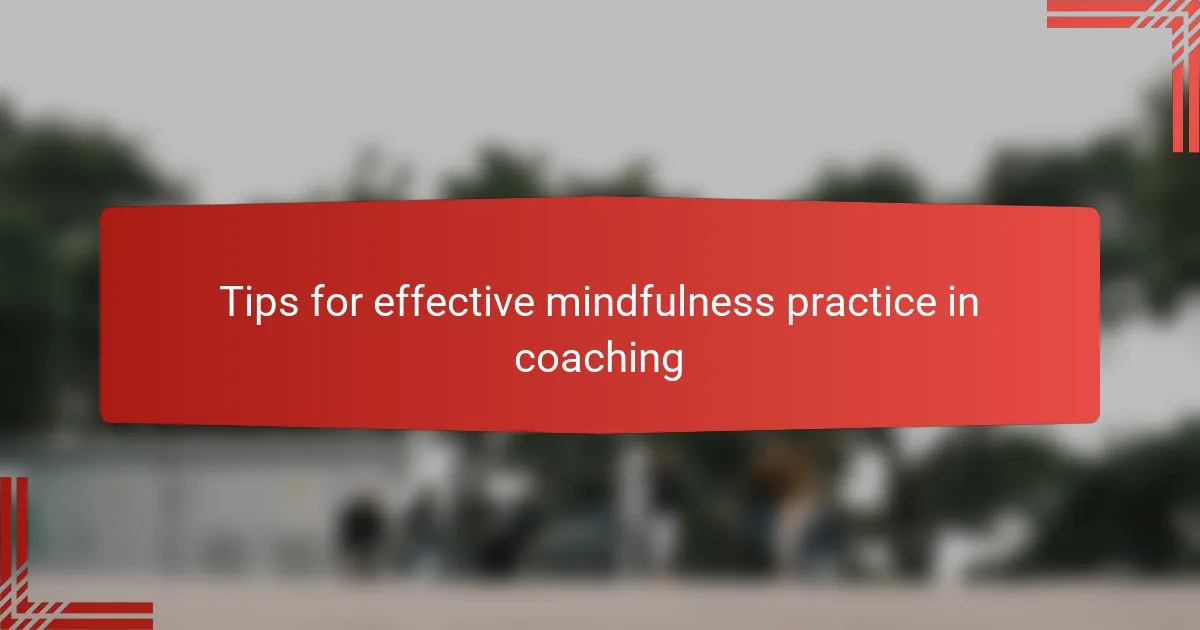
Tips for effective mindfulness practice in coaching
I’ve found that setting a clear intention before each mindfulness practice really helps keep the focus sharp. Have you ever started a session only to realize your mind has already wandered? Simply naming what you hope to gain—be it calm, clarity, or connection—grounds the experience and makes it more meaningful in coaching.
Another tip I swear by is keeping the exercises short but consistent. Early on, I tried lengthy meditations and felt overwhelmed, but switching to brief daily practices made mindfulness feel doable for both me and my clients. When time is tight, those few mindful breaths can still shift the entire tone of a session, creating space for real listening and growth.
Finally, I encourage coaches to model mindfulness authentically rather than perfectly. Vulnerability about my own struggles with staying present has opened doors with clients who felt pressured before. Isn’t it freeing when we acknowledge that mindfulness is a practice, not a perfect state? That acceptance alone fosters trust and deepens the coaching relationship.